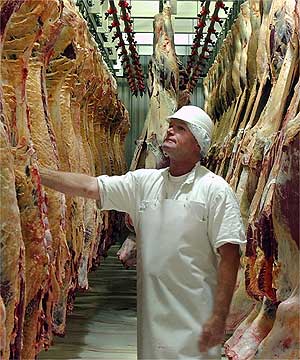Meat Grader
Tasks & duties

Meat graders may do some or all of the following depending on the size, workload and requirements of the plant:
-
examine animal carcasses
-
check the weight of each carcass
-
use a probe to check the thickness of the fat and muscle of each carcass (the GR)
-
check the carcass for bruising and disease damage
-
decide on the carcass grade by assessing the fat content, weight and animal type (determined by the number of teeth)
-
make sure the carcass is correctly tagged
-
enter the information into a computer
-
re-check graded carcasses
-
complete assessment reports for customers if carcasses are damaged
-
control accelerated conditioning and ageing processes (meat-tenderising processes)
-
carry out general office work
Skills & knowledge
Meat graders need to have:
-
knowledge of different types of meat, the process of meat grading and the acceptable fat levels and standards of meat
-
skills in handling animal carcasses and evaluating meat
-
decision making and communication skills
-
computer skills
-
knowledge of occupational safety and health laws, food and safety laws, and Ministry of Agriculture and Forestry requirements
Entry requirements
There are no specific entry requirements to become a meat grader but some experience in the meat industry may be preferred.
Training on the job
Meat graders gain skills on the job. They begin as trainees and are supervised by their employer or another meat grader to learn to grade and classify animal carcasses. Meat graders also attend courses in health and safety, and first aid.
Useful experience
Useful experience for meat graders includes:
-
work as a butcher or butcher's assistant
-
meat processing work experience
-
farm work
-
meat industry courses
Related courses
Butchery
Food Hygiene
Document Actions
